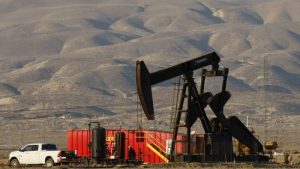 Emissions of energy-related carbon dioxide are still rising and are more than 40 per cent higher than in 2000. Despite all the policy measures taken by different countries and mounting evidence of the impact of climate change they are projected to keep growing, albeit more slowly, for the next two decades. Two things, however, have changed. One was predicted, the other is a complete surprise. The first is the growing role of Asia in global energy consumption. From 18 per cent of the total in 1980, Asian demand has risen to 41 per cent now and is projected to account for almost half by 2040. Two-thirds of all the growth in energy consumption to 2040 will come from Asia. The second change is the re-emergence of the US as one of the world’s leading energy suppliers, meeting its own needs and beginning to export both oil and gas. The shale revolution was completely unexpected. In the 2008 Outlook it is not mentioned. Now, only 10 years later, the US will produce some 7.6m barrels of oil a day from the main shale formations, with the prospect of much more to come. These shifts have affected not just the geography of trade but also prices. In 2008, with Brent crude averaging $97 a barrel, the IEA was anticipating an average of $100 (in 2007 money) over the period to 2015 and double that by 2030. Now, after a brief surge earlier this year, Brent is below $70 a barrel. Financial Times
Emissions of energy-related carbon dioxide are still rising and are more than 40 per cent higher than in 2000. Despite all the policy measures taken by different countries and mounting evidence of the impact of climate change they are projected to keep growing, albeit more slowly, for the next two decades. Two things, however, have changed. One was predicted, the other is a complete surprise. The first is the growing role of Asia in global energy consumption. From 18 per cent of the total in 1980, Asian demand has risen to 41 per cent now and is projected to account for almost half by 2040. Two-thirds of all the growth in energy consumption to 2040 will come from Asia. The second change is the re-emergence of the US as one of the world’s leading energy suppliers, meeting its own needs and beginning to export both oil and gas. The shale revolution was completely unexpected. In the 2008 Outlook it is not mentioned. Now, only 10 years later, the US will produce some 7.6m barrels of oil a day from the main shale formations, with the prospect of much more to come. These shifts have affected not just the geography of trade but also prices. In 2008, with Brent crude averaging $97 a barrel, the IEA was anticipating an average of $100 (in 2007 money) over the period to 2015 and double that by 2030. Now, after a brief surge earlier this year, Brent is below $70 a barrel. Financial Times
